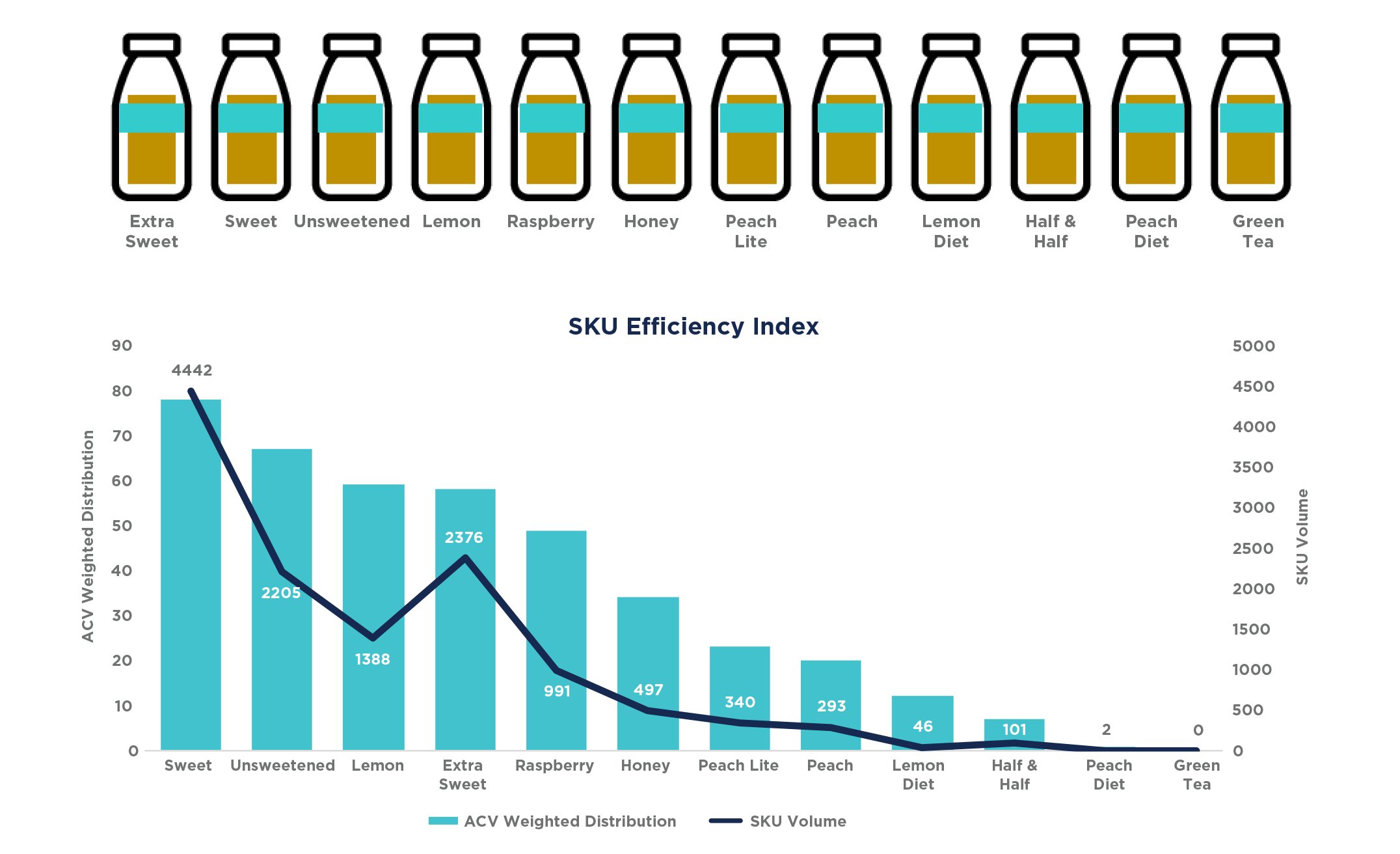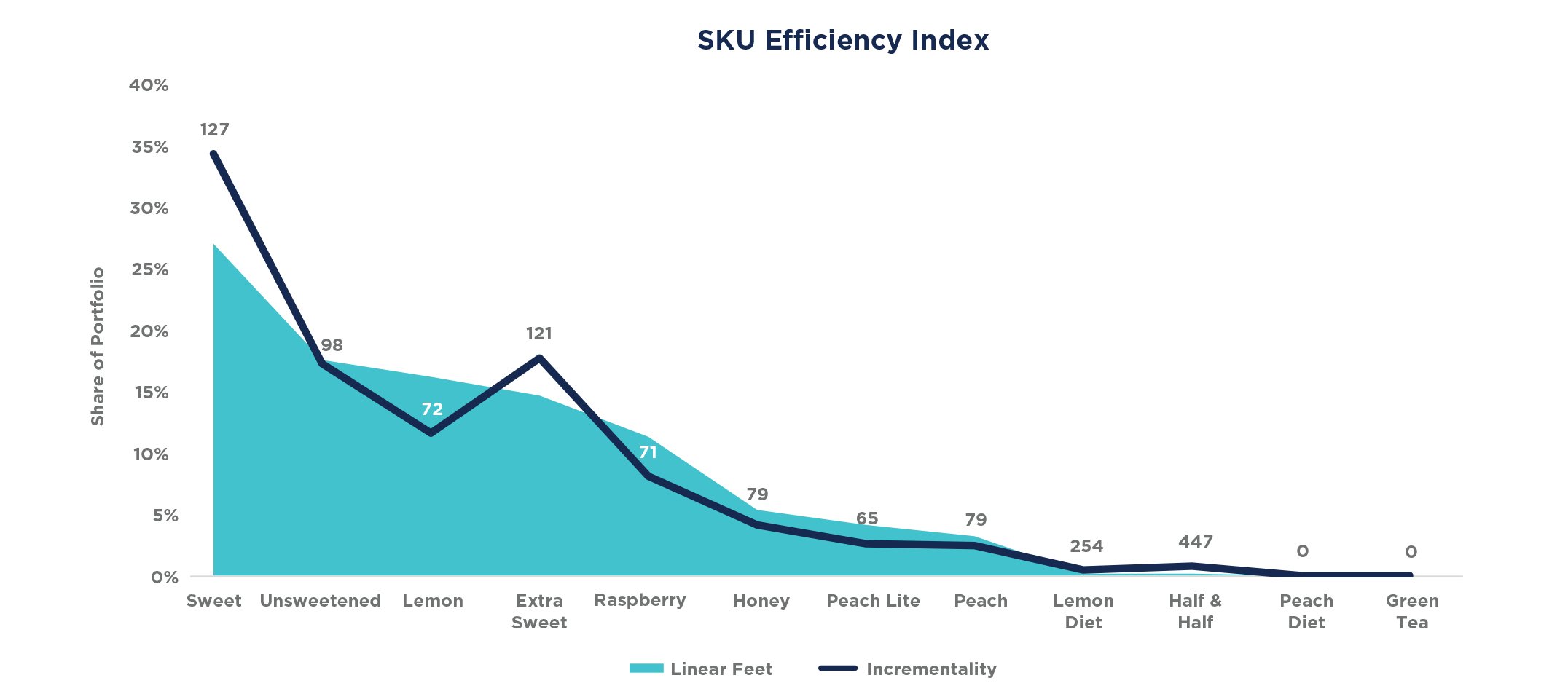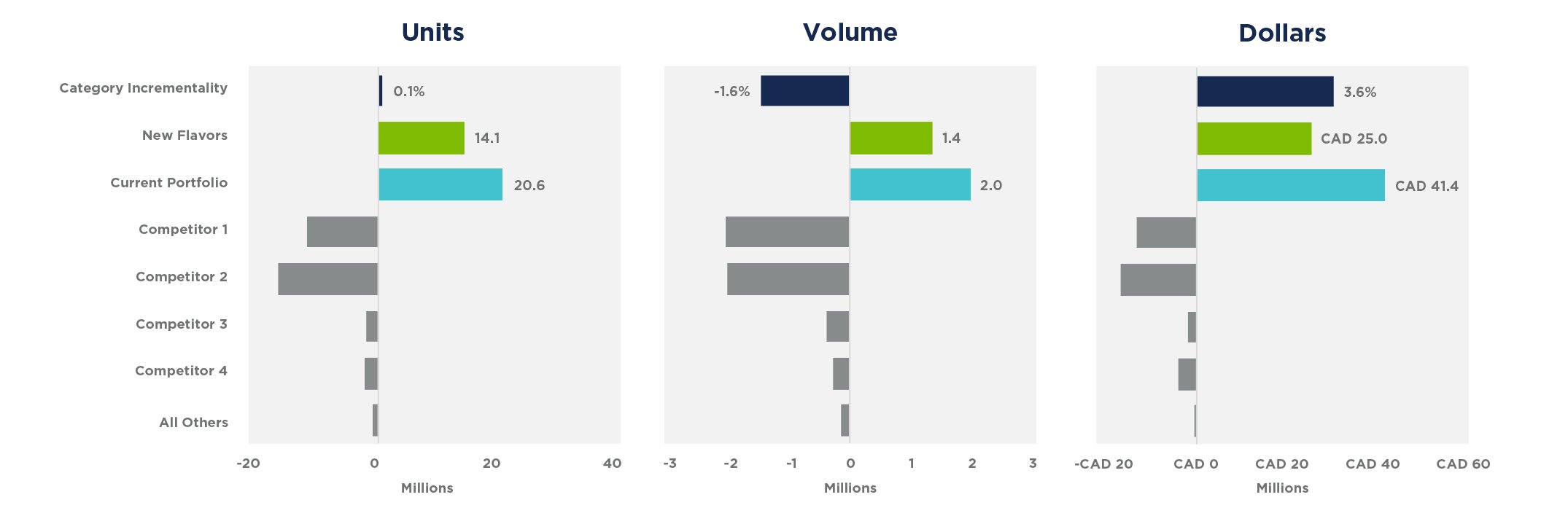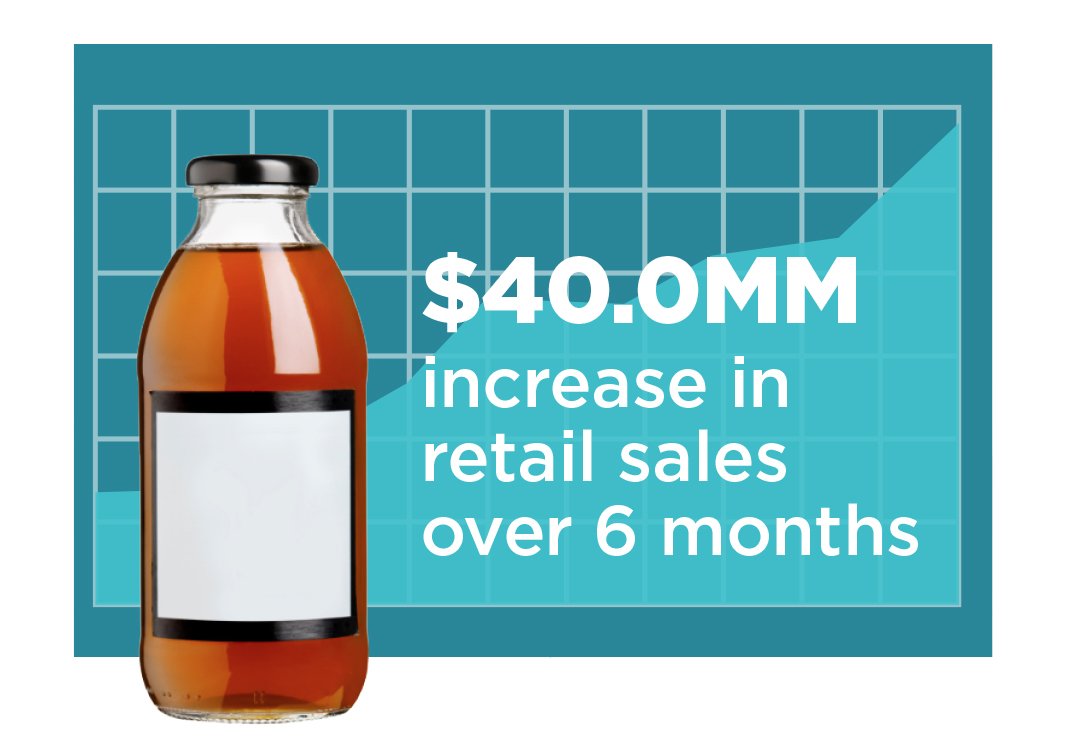Where There is Tea, There is Hope
LOCATION: Canada
Bottled teas are a popular and growing line of beverages in the marketplace. One brand used the CIA® platform to streamline an over-extended product line and provide room for further innovation.


SITUATION REVIEW
Expanded Flavors Fall Flat
A newer entry into the higher-end of ready-to-drink teas was struggling to add substantial growth. The brand tried to combat this for two years by increasing the line in convenience stores (7-Eleven, Mac’s, On the Run, etc.) from the original four flavor SKUs (Extra Sweet, Sweet, Unsweetened, and Lemon) to 12 flavor SKUs. Unfortunately, only one of the new flavors (Raspberry) achieved more than 50% all-commodity volume (ACV) Weighted Distribution. Retailers simply weren’t cooperating and giving the full portfolio the opportunity to shine in front of shoppers.

OPPORTUNITY ASSESSMENT
Savoring the Equity Options
Although the brand offered a package size that was 20% smaller than the average single-serve tea, the equity of the brand was able to command a 43% price per unit premium. This had to be attractive for retailers. Using the CIA® platform, the problem materialized upon further analysis of the incrementality versus transferred demand of the individual SKUs. The original four flavors represented more than 94% of the category incrementality and 82% of the portfolio incrementality. The additional eight SKUs told a wonderful marketing story about breadth and depth, but overwhelmingly cannibalized the original four flavours.

SCENARIO DEFINITION
Putting the Best Flavors Forward
The brand worked with the Middlegame team to refine the linear space allocated to the four original flavors plus two new flavors, and to improve their position, including adding a rotating slot for “limited time offer” SKUs of four of the best additional flavors. The remaining four flavors were permanently delisted. The limited time offer would continue to generate excitement at the shelf even if the majority of shopper choices remained with the four original flavors. The new flavors were based on a similar incrementality and transferred analysis of the competition that identified the two as significant opportunities as an “imitative” line extension.

EXPECTATION ANALYSIS
Let’s Do a Taste Testing
Testing the scenario in CIA® revealed that the overall impact on shopper choices was expected to be minimal with the category units growing by +0.1%. However, the brand portfolio would increase by +10.7% by transferring demand from the competition. Total liters volume for the category would decline by -1.6% due to the brand offering smaller sizes, but a “win-win” story would emerge for the brand to take to retailers. The net transferred demand to the higher price premium SKUs meant that the category retail dollars would grow by +3.6%.

CLIENT ACTIONS
Tea for Me and Tea for You
Middlegame analytics persuaded the marketing team to move to a “more is less” strategy and to provide more focus on the keys SKUs in the brand as opposed to looking for growth through an ever-expanding portfolio. Over the course of the next six months, the brand added over $40.0MM in retail sales to total brand sales in convenience stores. At the same time, the use of the fully-competitive CIA® platform allowed them to address future new flavors in a more pragmatic ways and literally allow the other players in the category to research and test their next additions to the line.
